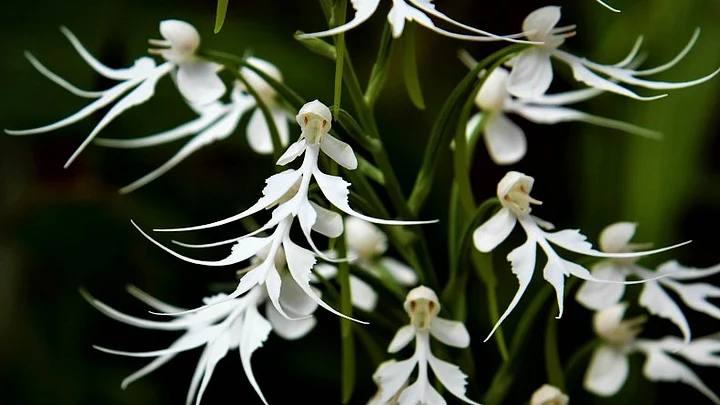As delegates debate at the annual UN conference on climate change, we should be looking ahead with more interest to next month’s COP15 of the Convention on Biological Diversity, the treaty aimed at saving the planet’s wild species.
The debate over whether humans can physically survive climate change is misguided, a new op-ed argues. Rather, the question we should be asking is how to save the endlessly complex and ailing biosphere.
“The reward will be a future in which people are still living in and on this splendid planet, rather than than asking, with increasing trepidation, whether we will manage to defend ourselves from it.”
This post is a commentary. The views expressed are those of the author, not necessarily Mongabay.
A recent New York Times Magazine article stoked debate on how worried we should be about Earth’s future as a viable habitat for human beings. The author, David Wallace-Wells, said he was less worried than several years ago when he wrote the book, The Uninhabitable Earth.
Progress on renewable energy has been spectacular, and climate modelers have since judged the most extreme warming scenarios covered in Wallace-Wells’s book to be implausible, narrowing warming projections to two to three degrees Celsius by 2100. Others contend that there are plenty of reasons to be very, very worried about humans’ fate.
The medical journal the Lancet, for example, detailed in an October 25 report the ways in which humans are already overheating, getting sick, starving, and suffering in various other ways because of climate change.
Heat-related deaths are up 69% this century. All that is only going to get worse, the researchers said.
But the debate over whether humans can physically survive climate change is misguided. The question we should be asking is how to save the endlessly complex and ailing biosphere.
And as delegates debate in Egypt at COP27, the annual UN conference on climate change, we should be looking ahead with perhaps more interest to next month’s COP15 of the Convention on Biological Diversity, the perennially overshadowed treaty aimed at saving the planet’s wild species.
In 2019, the Intergovernmental Panel on Climate Change issued a special report on the consequences of moving past 1.5°C of warming. The panel found that humans would suffer and, for the most part, adapt and survive. Not so the millions of species with which we share the planet.
Under likely warming scenarios, virtually all the globe’s coral reefs (which feed and otherwise benefit a billion people) will be gone. Parts of the Amazon will flip into degraded grasslands, putting one in ten of the planet’s species at risk and draining the biggest tropical carbon sink.
Billions of migratory birds will lose boreal forest breeding habitat. Already, bizarre biological tragedies are unfolding; hot Queensland beaches are yielding all-female hatches of green sea turtles, whose sex—like that of many reptiles—is determined by incubation temperature. They could be the last, and loneliest generation of their species.
These climate impacts have combined with the demands of an exploding human population to reduce the abundance of wild species by 69% since 1970.
The collective mass of humanity is ten times that of every wild mammal on the planet combined.
The biodiversity crisis is arguably a good deal further along than the climate crisis—and fully linked to it. And still, some of us are asking whether our world, some decades hence, equipped with sea walls, cooling centers, and windmills, may still function as a terrarium for humans.
This is a morally vapid question. It ignores the fact that the planet is an intricate living system of which humans are a part. People I’ve met whose cultures are still living in close quarters with wild nature take it for granted that they have an obligation to care for the surroundings that nurture them.
Care consists of more than retrofitting our planet with the minimum necessary technology to limit temperature rises and help humans survive them. It requires an effort to sustain the whole, to treat the non-humans not as scenery but as relatives. And to treat ourselves as something more vital and daring than hydroponic lettuces.
Care for the biosphere is crucial from a pragmatic point of view because we can’t recreate its offerings in a lab. And because a sense of obligation will provide far more motivation than the goal of sustaining Earth as an inert human container.
To succeed we need to adapt more than our technology. Pollution can be reduced to a function with three terms: human population; GDP per capita; and emissions per unit of GDP
The last term, I was taught in graduate school, can also be described as “technology” – with technological advances you can have a growing population and increasing material prosperity without more pollution.
Thankfully, technology has been galloping in the 30 years since I graduated, but not as fast as population and material wealth.
The upshot has been an increase in atmospheric CO2 from 355 to 416 parts-per-million. Realism obliges us to work on all three terms of the equation—and to explicitly make space for nature.
The reward will be a future in which people are still living in and on this splendid planet, rather than asking, with increasing trepidation, whether we will manage to defend ourselves from it.
( John Reid is co-author with Thomas Lovejoy of Ever Green: Saving Big Forests to Save the Planet and senior economist at the non-profit Nia Tero.)
(This copy was originally published at Mongabay. It has been republished here with permission.)
(At The Quint, we question everything. Play an active role in shaping our journalism by becoming a member today.)
